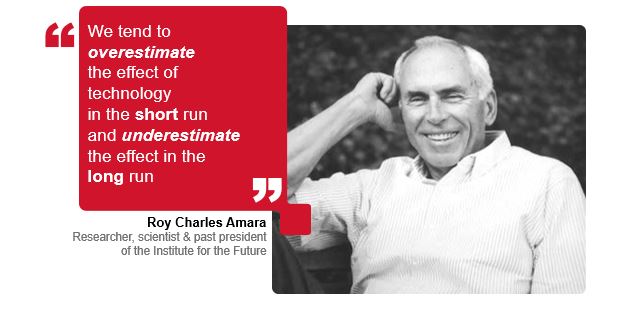By Erwin Busselot, Business Innovations & Solutions Director, Ricoh Graphic Communications, Ricoh Europe
Steve Jobs reportedly said, ‘Innovation is the ability to see change as an opportunity – not a threat.’
We all know the pace of change in the printing industry is fast. Evolving demands, challenges and pressures continuously drive new developments, approaches, and ways of thinking.
This presents a range of opportunities for those prepared to adapt.
But how can commercial printers ensure they make the right decisions that will enable them to grow and thrive?
How can they be sure their client base will respond positively and embrace the new products and services offered?
The key to adoption is the perception of an idea, behaviour, or product, as being new or innovative that then gains momentum and diffuses or spreads. That is according to E.M. Rogers’ Diffusion of Innovation (DOI) Theory.
Some people are more likely to explore innovation than others. In fact, there are five adopter categories:
Innovators – Those who want to be the first to try the innovation. They are interested in new ideas and willing to take a risk.
Early Adopters – They represent opinion leaders, enjoy leadership roles, and welcome change opportunities. They are happy to adopt new ideas because they can already see the need to change.
Early Majority – These are rarely leaders, but they do adopt new ideas fairly early on.
Late Majority – These people are sceptical of change and will adopt an innovation only after it has been tried by the majority.
Laggards – These are bound by tradition and are very conservative. They are very sceptical of change.
Think about the characteristics of your clients and who will be most receptive to new ideas, and able to influence others in your marketplace. That is where to start first discussing new services, products and applications.
When assessing something new the following factors are important to consider:
Relative Advantage – The degree to which an innovation is seen as better than the idea or product it replaces.
Compatibility – How consistent the innovation is with the values, experiences, and needs of the potential adopters.
Complexity – How difficult the innovation is to understand and/or use.
Triability – The extent to which the innovation can be tested or experimented with before a commitment to adopt is made.
Observability – The extent to which the innovation provides tangible results.
This is a useful framework for considering the viability of potential new propositions. To help establish how they might be received among your target market sectors.
Also shaping how adopters will respond are the three levels of innovation:
1. Incremental Innovation
Small, impactful improvements in products, services, and other elements of the business. These tend to be the ‘new and improved’ innovations. They help extend product, service, and business life cycles and improve profitability. They can be easily visualised and quickly communicated.
2. Breakthrough Innovation
A meaningful change in the way the business operates that results in something demonstrably new. Breakthrough innovation produces a substantial competitive edge for a while.
3. Transformational Innovation
Often (but not always) the introduction of a technology that creates a new industry and transforms the way we work. This kind of innovation often eliminates existing industries or, at a minimum, totally transforms them.
The latter is what the Japanese call Henkaku. It is a business ethos that influences all aspects of Ricoh’s operation. It impacts research and shapes product design resulting in systems and solutions that intelligently respond to market demands. It also helps tailor education, guidance, and support for clients.
The American futurist Roy Charles Amara made a valuable contribution to our understanding of how innovations spread. He stated that “We tend to overestimate the effect of technology in the short run and underestimate the effect in the long run.” Examples of what is called Amara’s Law abound, including digital photography and the internet. And what about digital printing?
The print market is moving to an “increasingly digital future,” according to the latest Smithers industry report. It appears to be moving towards an accelerated rate of adoption. How will you ride this wave, innovating with new offers to wow your clients?
www.ricoh-europe.com








